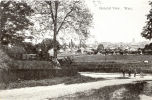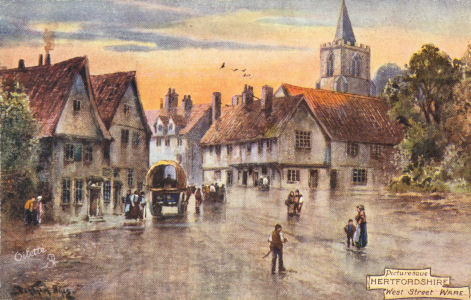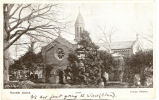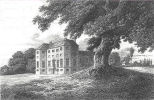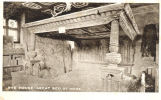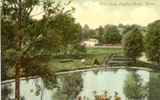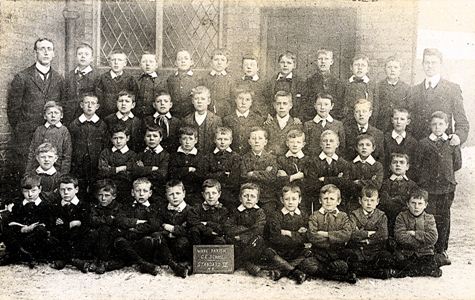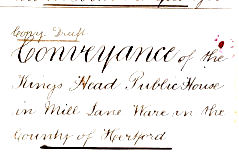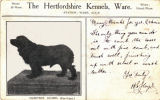As seen from the railway, Ware appears to be a town composed almost entirely of maltings. There are about eighty of these establishments, and a great deal of trade is done. Ware has, however, an ancient history, and possesses a fine church. Here the Danes fortified a port in 896, but King Alfred was able to drive them out by means of diverting the river Lea into another channel. The manor was given by the Conqueror to Hugh de Grentemaisnil, who here endowed a priory of Benedictines. This priory was at first attached to the abbey of St. Ebrulph, in Normandy, but after the suppression of alien monasteries was annexed to the abbey of Shene. Some remains of the priory have been worked into the walls of a modern house, called by the old name. There is some sculpture representing figures at the N.E. angle. There was also a house of Gray Friars, but its locality is uncertain. It was founded, 1233, by Margaret, Countess of Leicester, who was lady of the manor. A tournament was held in Ware in 1241, in which Gilbert le Mareschal, E. of Pembroke, was killed. The manor was held by the" Fair Maid of Kent," wife of the Black Prince, and also by "the Lady Margaret," mother of Henry VII. The church (St. Mary) is large and striking. The tower is of the time of Edward III., the nave and aisles are of the time of Richard II., and the chancel is of the time of Henry VII. It is said the latter was built by the Lady Margaret. Within are several brasses, one of the date 1454. There is a monument to Elizabeth de Clare, granddaughter of Edward I., and one to Sir Richard Fanshawe, a distinguished Royalist in the civil wars, whose wife, Lady Fanshawe, has left valuable memoirs of that period. The font is large and has curious sculptures. It is said to have been given to the church by Thomas de Montacute in the time of Henry IV. There are remains of colour on the roofs, especially in the S. chapel. Christ's Hospital, London, had once an institution at Ware, which has been removed to Hertford. The children occupied one of the old galleries in the church The buildings are now private residences. There was a Grammar School of the time of Elizabeth, founded by Humphrey Spencer, which has been revived. In Bury Field four stone coffins, containing amongst the bones some Roman coins, were discovered in 1802. There are two new ecclesiastical districts with modern churches, Christ Church, and Holy Trinity, Wareside. There is a literary institution, with library and readingroom. Tourist's Guide to Hertfordshire 1891
Books about Ware A Quaint Old Fashioned Place - East Hertfordshire in the 1830s The Great Book of Ware Ware's Past in Pictures, by Maurice Edwards and David Perman, Rockingham Press, 1991 - Other books by the Rockingham Press,: Ware Men in the First World War, The Ware Mutiny 1647, Ware at War 1939-1945 Wareside - A Miscellany of Histories Wickham of Ware - the history of D. Wickham & Co. Ltd, Railcar Manufacturers" by James Cooper Jnr and Loxley Ford, edited by David Perman and published by Rockingham Press in December 2003 (ISBN 978-1-873468-40-1). - Wickhams were one of the largest employers in Ware at one time and established a worldwide reputation for themselves as suppliers to the railway industry. They also built rolling stock for the British Railways Board and had a special arrangement with them to use the St Margarets to Buntingford branch line to test completed trains before delivery. [Book recommended by Rob Candlish.] [link] |
||||||||
| Ware Schools, circa 1840 | ||||||||
| Under Development | ||||||||
| Cannon Brewery | ||||||||
|
If you have a relevant question why not Ask Chris |
||||||||



